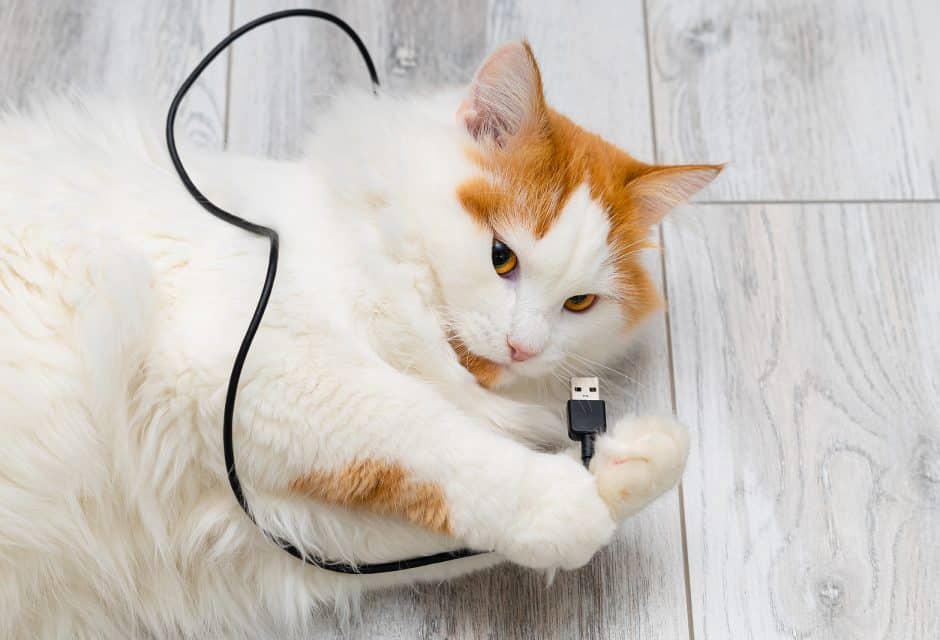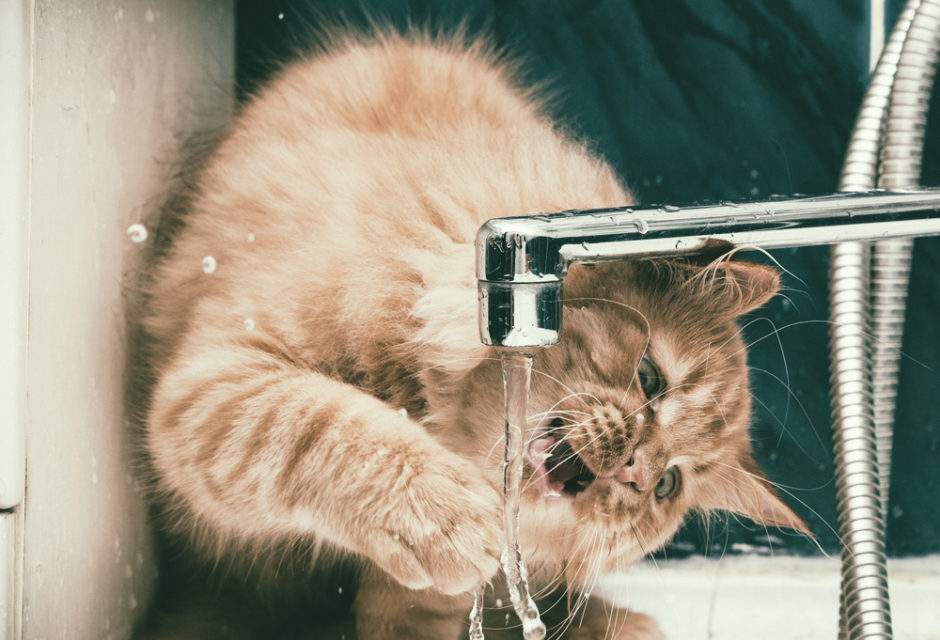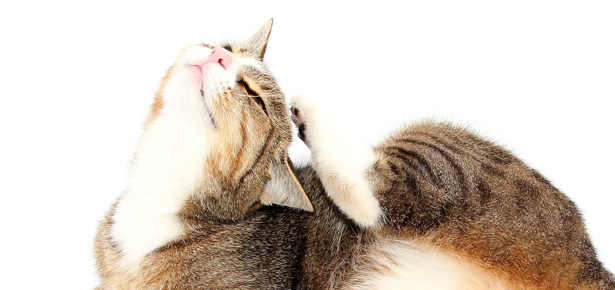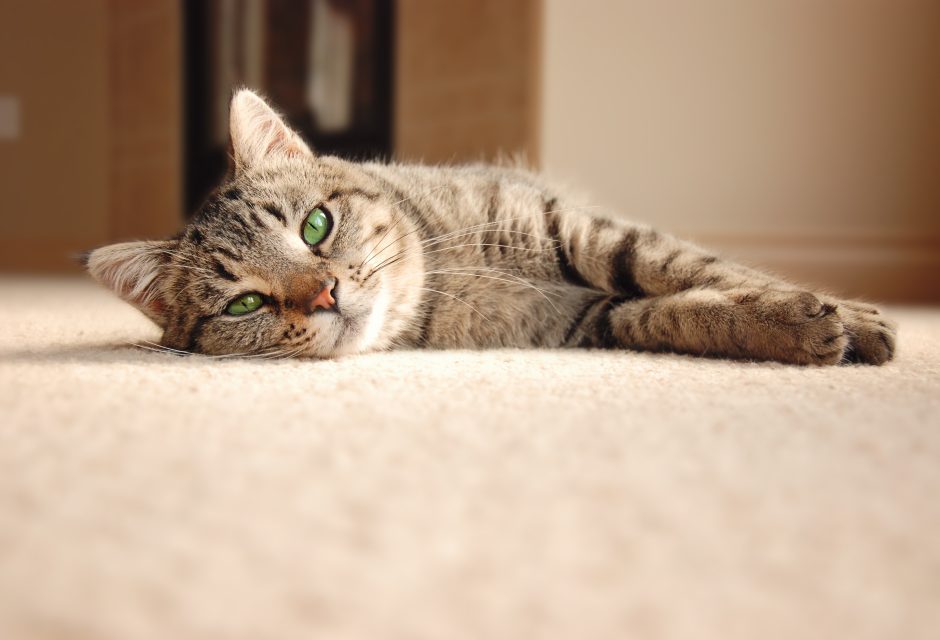

How To Get Rid Of Cat Pee Smell from Your Carpet, Clothes, Couch, and Car
Is your cat spraying? There are a number of reasons why your cat maybe not using the litter box. Accidents can happen, but that urine smell is challenging to eliminate! We’ve laid out a few tips below to help you to get rid of the cat pee smell from your carpet, clothes, couch, and car. The main thing is finding the exact location of the cat pee. This can be tricky, especially if the incident happens before you get home and has dried already. The easiest thing is to follow your nose (since cat pee smells so strongly!) but if that’s not working and you can only find a general area, look for stains or try a UV black light.
If you’re using a black light, here are a few tips to help your search:
- Make sure the room is very dark. Either close the blinds or wait for nighttime, otherwise, the UV light won’t work as well.
- Cat urine will glow yellow or neon green under a UV blacklight. Other stains or materials (such as cleaning products and tonic water) can also glow, so lightly smelling the stain is a good way to pinpoint if you’ve found the right spot.
- Mark the spot with tape or chalk once you’ve found it, so you can easily return and clean with the lights on.
Once you’ve found the area your cat has peed in, here are the next steps to get rid of that smell:
Absorb any Urine-Soaked Areas Immediately
Whether the affected area is carpet, wood or leather, use a paper towel or rag to soak up any noticeable cat urine puddles first. Lightly dab the absorbent material onto the wet area (instead of rubbing) so it pulls the liquid out easier. This won’t remove all of the urine but will make the deep cleaning process much simpler.
Use an Enzyme Cleaner:
Enzyme-based cleaners, such as Urine Gone, are biological compounds that react with fats, oils, and proteins. The enzymes break them down completely, getting rid of stains and smells. These cleaners are ideal for a pet household because they’re non-toxic and biodegradable. Since the process is biological, the cleaner does require time to fully break down the stain and can take up to a couple of days (depending on the cleaner), but it will completely remove the issue.
Spray the cat urine stain and the area immediately surrounding the stain with the enzyme cleaner. If the urine was on hardwood or an area that shouldn’t get wet, there are also powdered enzyme cleaners that can work just as well. Let it sit for at least 20 minutes and follow the cleaner’s instructions for cleanup. Make sure to test a small area of your clothing, carpet or wood flooring first.
Getting Cat Pee Out of Clothing and Fabric:
If the cat pee is on fabric that can easily be put in the wash, just pop it into the washing machine with enzyme-based laundry detergent, plus your regular detergent. If the area is particularly bad, you can pre-treat the clothing and let it soak in the enzyme detergent first, for around 5 minutes.
The same goes for clothing that can’t go in the washing machine. Just rinse the soiled fabric underwater first, soak the fabric in the enzyme detergent for the recommended amount of time labeled on the cleaner, and rinse by hand. Enzyme cleaners are known for being gentle on most surfaces, but we always recommend doing a small test first.
Why do cats urinate outside of the litter box?
- They’re unhappy with the litterbox. There are a few reasons for this, including the type or smell of the litter you use. A big reason is based on how often do you clean the litterbox. If you had to use a dirty toilet all the time, you’d probably look elsewhere to do your business too! Cat’s have very sensitive noses, so making sure they’re happy with their bathroom is an optimal way to ensure they use the proper place. This is especially important in a multi-cat household.
- Inability to access the litterbox. This is especially common with elderly cats or kittens. If the litterbox is hard to get into (eg. Your cat is arthritic), they might look elsewhere for the bathroom.
- Stress or anxiety. If a cat isn’t feeling comfortable in their environment, they could urinate in other locations to ‘mark their territory’. This urine-spray marking is most commonly found in males who haven’t been neutered yet, but can also happen in a multi-cat household or when a cat is introduced to something new.
- Your cat might have a UTI. Urinary Tract Infections (UTIs) are common in cats and dogs and can cause painful urination for your pet. If your cat suddenly starts peeing on carpets or in random places, a vet checkup should be first on the list. This is most common in older cats but can happen at all ages. The common signs of a UTI (and more serious kidney infections) are if your cat is straining to urinate but without much coming out.
- Your cat could have diabetes. If you notice your cat is super thirsty all the time and goes to the bathroom more often than before, go to the vet. Diabetes is potentially deadly if left untreated.
There are many reasons why your cat could be avoiding the litterbox. Finding out why is the primary focus to stop ongoing pee-related issues.
Good luck on getting rid of cat pee smells and these tips should have your life smelling daisy-fresh!
Join the newsletter and never miss out on cat content again!
"*" indicates required fields
By clicking the arrow, you agree to our web Terms of Use and Privacy & Cookie Policy. Easy unsubscribe links are provided in every email.










